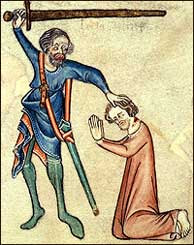THOMAS OF LANCASTER, REBEL COUSIN OF KING EDWARD II, FROMWARLORD TO SAINT/CHAPTER SEVEN
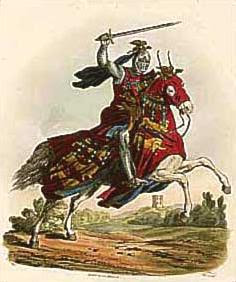
http://www.newworldencyclopedia.org/entry/Thomas_Plantagenet,_2nd_Earl_of_LancasterTHOMAS 2ND EARL OF LANCASTER
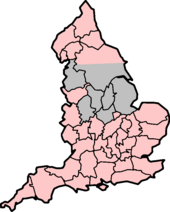
Thomas of Lancaster’s main possessions (Maddicott).THOMAS OF LANCASTER’S MAIN POSSESSIONShttps://en.wikipedia.org/wiki/Thomas,_2nd_Earl_of_Lancaster
http://www.newworldencyclopedia.org/entry/Thomas_Plantagenet,_2nd_Earl_of_LancasterTHOMAS 2ND EARL OF LANCASTER
Thomas of Lancaster’s main possessions (Maddicott).THOMAS OF LANCASTER’S MAIN POSSESSIONShttps://en.wikipedia.org/wiki/Thomas,_2nd_Earl_of_Lancaster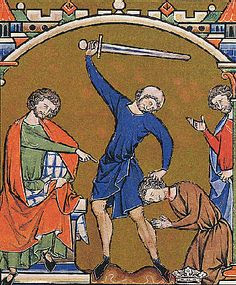
MURDER OF PIERS GAVESTON,INTIMATE FRIEND ANS[POSSIBLE] LOVER OF KING EDWARD II, UNDER THE DIRECT RESPONSIBILITYOF THE EARLS OF LANCASTER, WARWICK, HEREFORD AND ARUNDELMURDER OF PIERS GAVESTON,INTIMATE FRIEND ANS[POSSIBLE] LOVER OF KING EDWARD II, UNDER THE DIRECT RESPONSIBILITYOF THE EARLS OF LANCASTER, WARWICK, HEREFORD AND ARUNDELhttps://themortimersblog.wordpress.com/2017/03/22/a-royal-traitor-the-life-execution-of-thomas-of-lancaster-a-guest-post-by-stephen-spinks/

PONTEFRACT CASTLE, THOMAS OF LANCASTER’S FAVOURITECASTLE [INHERITED FROM HIS FATHER IN LAW, HENRY DE LACY, 3TH EARL OFLINCOLN, AT HIS DEATH IN 1311]IN HIS FAVOURITE CASTLE HIS SOCALLED ”TRIAL” TOOKPLACE AND NEAR HIS FAVOURITE CASTLE, IRONICALLY, HE WAS EXECUTEDhttps://en.wikipedia.org/wiki/Pontefract_Castle#Historyhttps://en.wikipedia.org/wiki/Pontefract_Castle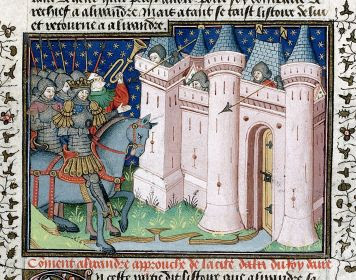
Edward was twice jeered by Lancaster’s garrison at Pontefract in 1317 & 1320 as he passed from north to south
EDWARD II WAS TWICE JEERED BY THOMAS OF LANCASTERAND HIS HOUSEHOLD, IN AT PONTEFRACT IN 1317 AND 1320, WHEN HEPASSED FROM NORTH TO SOUTH…..https://themortimersblog.wordpress.com/2017/03/22/a-royal-traitor-the-life-execution-of-thomas-of-lancaster-a-guest-post-by-stephen-spinks/
THE EXECUTION OF THOMAS, 2ND EARL OF LANCASTERhttp://www.luminarium.org/encyclopedia/thomasoflancaster.htm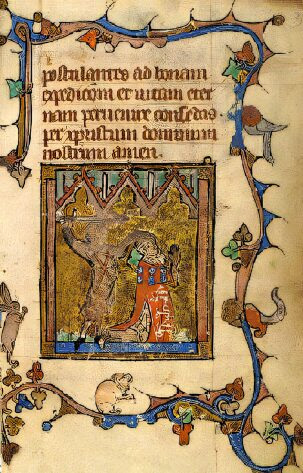
THE EXECUTION OF THOMAS, 2ND EARL OF LANCASTERhttp://www.englishmonarchs.co.uk/plantagenet_74.html
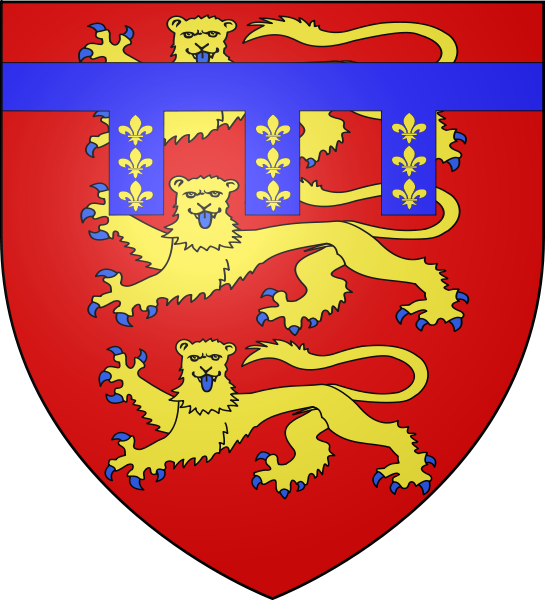
PLANTAGENETCOAT OF ARMS OF EDMUND CROUCHBACK [SON OFKING HENRY III, BROTHER OF KING EDWARD I ANDFATHER OF THOMAS, 2ND EARL OF LANCASTER], THOMAS,EARL OF LANCASTER AND HIS SUCCESSORShttp://www.newworldencyclopedia.org/entry/Thomas_Plantagenet,_2nd_Earl_of_Lancaster
Readers, I greet you:Following my Chapers of the Earl of Lancaster Saga, whose feud withhis cousin, king Edward II, ended in an Open War, you’ll understand,that this exciting Drama must come to an End with one winner
The smart reader, who read my former chapters well, will have an idea,who that is.But was it a real victory?You’ll see
This were the chapters you read already
https://www.astridessed.nl/thomas-of-lancaster-rebel-cousin-of-king-edward-ii-from-warlord-to-saint-chapter-one/
NOW READ CHAPTER SEVEN…………………………..
CHAPTER SEVEN
OPEN WAR
DESPENSER WAR/SECOND PHASE
[October 1321[March 1322]
I BOLDLY STATE, THAT IF THOMAS OF LANCASTER, THE MARCHER
LORDS AND THEIR ATTACHING ALLIES HAD JOINED TOGETHER
EFFECTIVELY, FORGOTTEN UNDERLYING FEUDS AND IGNORED THE
DIVIDE AND RULE GAME OF THE KING, THEY COULD HAVE WON.
Preview
For the readers, who failed to read Chapter six:
What happened in Despenser war, first phase?
After the Treaty of Leake in 1318 [reconciliation between the King and
his overmighty cousin Thomas of Lancaster, with whom he
the King feuded endlessly] and the banishment of the three favourites of the King [what Lancaster had demanded], a new favourite, Hugh Despenser the Younger
rose [who took his father along with him in his enjoyment of favouritism].
The King’s excessive favouritism towards Despenser, and Despenser’s abnormal
avariciousness, drove the Marcher Lords
into rebellion and they made an alliance with Thomas of Lancaster, who
loathed those favourites of the King.
The Marcher Lords marched on London in 1321 [later supported by
Lancaster] and forced the King to send the Despensers in exile.
A
Prelude
B
Queen Isabella’s Pilgrimage to Canterbury and
her reception at Leeds Castle
C
Hell breaks loose:
The Siege of Leeds Castle
The Siege of Leeds: Aftermath
King’s military victory/Political consequences
D
Fight to the death
Edward II’s war with the Marcher Lords
Events in november, december and begin of january
E
Fight to the death
The Marcher Lords and Thomas of Lancaster
Edward II’s war with the Marcher Lords
Swan Song
F
Fight to the death
Edward II and Thomas of Lancaster
Last dance
A
PRELUDE
After the Marcher Lords’ ”March on London” late july 1321 [348], in august backed
by Thomas of Lancaster [349] and eventually forcing the King to banish the Despensers, tensions grew high in the country, both sides mobilising their forces.
And of course the King sought for an opportunity, to bring back his favourite
Despensers as soon as possible.
Then in the autumn of 1321, Something took place, which would change
the course of events for the King, the Despensers and the opposing rebels.
B
QUEEN ISABELLA’S PILMGRIMAGE TO CANTERBURY
AND HER RECEPTION AT LEEDS CASTLE
It happened in october 1321, that Queen Isabella went on pilgrimage
to Canterbury, and, not taking the usual route headed for Leeds
Castle, where Lord Badlesmere was appointed as governor.
[350]
And this Lord Badlesmere was at first loyal to the King,
being the King’s household steward [351], but later switched sides and
became a Contrariant, thus an ally of the Marcher Lords
and Thomas of Lancaster. [352]
At the moment of the Queen’s arrival, Lord Badlesmere was
at a Contrariant’s meeting at Oxford and whether on instructions
of her husband or not [353], his wife, Lady Badlesmere, refused
the Queen entrance to the Castle, which, of course, was a gross insult.
Queen Isabella, probably furious, ordered her escort to force an entry into the castle, and the garrison of Lady Badlesmere
opened up a volley of arrows at them, killing six men of the Queen.
Isabella was left outside and had to find other lodgings..,.
Of course the King was furious.
He avenged the insult to the Queen, by
besieging the Castle of Leeds. [354]
Coincidence or deliberate?
Now it is possible, that Queen Isabella for some innocent
reason had taken another route than usual, but
according to some historians, she did so to create a casus belli. [355]
With other words:
Her heading for Leeds Castle was deliberate and on the
orders of the King, in the hope that Lady Badlesmere
[what she did, indeed] as the wife of a Contrariant rebel,
would refuse the Queen entrance to the Castle, giving
the King the excuse to revenge his wife’s insult, starting
the war again. [356]
And not only that:
Because of the insult of the Queen, many moderate barons,
who didn’t take sides yet, would join the royal army.
It also gave the King opportunity to a policy of
”divide et impera” [Latin for ”divide and rule],
since Thomas of Lancaster loathed Lord Badlesmere
and would probably not come to Lady Badlesmere’s assistance, when the castle were besieged. [357]
And Thomas of Lancaster
fell right into the trap [poor Lord Thomas, not very smart
and dishonourable, the Lady was in need…..] and indeed didn’t help , even ordered the Marcher Lords not to …..[358]
Lord Badlesmere himself assembled an army and tried
to help his wife and break the siege of the castle, but
was not able to do so, since Thomas of Lancaster
and the Marcher Lords didn’t come to his aid …[359]
This strategic failure of Lancaster led to a major strengthening of the position of the King:
Because of the insult to the Queen and King’s readiness
to go á royal ”fist to fist, toe to toe on this,
many barons and volunteers indeed rallied
to his assistance ……[360]
AND his victory would lead to his regaining control of South-East England…..
Another ”great” thing happened
Edward II felt his position strong enough to revoke the
banishment order of the Despensers in december 1321…..[361]
So the same mess started over again……
THAT’S WHY I STATED, THAT ONE OF THE
CAUSES OF THE DEFEAT OF THE CONTRARIANTS
WAS UNDERLYING FEUDS [as between Thomas of Lancaster and Lord Badlesmere] AND THE DEVIOUS DIVIDE ET IMPERA POLICY OF THE KING…
But to the honour of Lord Badlesmere [who did get a bad press
in history, whether it is uncertain, if it is deserved] [362] must be said, that he fought
side by side with Thomas of Lancaster in his last battle
against the King, the Battle of Boroughbridge, in spite of the
fact, that Thomas didn’t come to the assistance of his wife,
when besieged, nor help him [Badlesmere] to break the siege….[363]
Now about the coincidence or deliberate act regarding
Queen Isabella heading for Leeds Castle:
Assuming that it was a deliberate trap of the King, it
was very clever strategy.
What poses the question, whether the King had thought this
out for himself, since he had, to put it mildly, no great
strategic talents:
Therefore some historians think, that he was in contact with
[and likely had met] the banished Hugh Despenser the Younger,
who perhaps was the mastermind behind the casus belli….[364]
And concerning the clever ”divide and rule” policy of the KIng:
Edward [and possibly Hugh Despenser, when it was true
that they had met and were together in this] must have known that the earl of Lancaster detested Badlesmere, and gambled that the he would not help him. [365]
And he gambled right, alas for Thomas of Lancaster, the
other Contrariants and Lord and Lady Badlesmere themselves,
as the story will tell….
But again:
It was no clever strategy of Lord Thomas either, not to
help a man, who was his ally, just because he didn’t
like him.
In a rebellion, you can’t always choose your friends,
my lord of Lancaster…..
C
HELL BROKE LOOSE
THE SIEGE OF LEEDS CASTLE
THE SIEGE AND AFTERMATH
Edward II mobilised his forces and placed Leeds
Castle under siege, giving Queen Isabella the Great Seal
and control of the Royal Chancery. [366]
The assault on the Castle persisted for more than five days
and on 31 october 1321 Lady Badlesmere surrendered. [367]
Now any siege of a city or a Castle is a nasty business,
but especially Edward II’s siege of Castle Leeds:
It was a siege of a Castle, held by a woman, who
was totally outnumbered by the forces of the King [368]
and got no help whatsoever from the Contrariants [as I
from now on will call the rebels against the King, the
Marcher Lords, the Earl of Lancaster and their forces and
allies] [369], despite of her husband Lord Badlesmere
begging them to come to the aid of his wife. [370]
Of course there was a problem here, in this case
for the Marcher Lords.
Destroying the Despenser lands is one thing, using
your forces in a direct battle against the King is another
and openly, treason.
Besides, their ally the Earl of Lancaster had ordered them,
not to come to the aid of Badlesmere [which included his
wife], since he had a great personal dislike of him
[Badlesmere] [371]
A nasty business, as I said.
The King, with on his side the Earls of Kent and Norfolk
[his two halfbrothers] and the Earls of Surrey, Arundel,
Pembroke and Richmond
[372]
The King even brought his nearly nine year old son, the Earl
of Chester [the later Edward III] [373]
I can’t see this siege , even if the King wanted to revenge
the insult to his Queen, as utter cowardly.
But to be fair:
Also is the behaviour of the Contrariants, not to
come to the aid of the wife of one of their allies.
Siege of Leeds
Aftermath:
The aftermath was gruesome:
Thirteen members of the garrison were drawn and hanged
after the end of the siege, even in those cruel times unusual,
since men had never been executed within for holding a castle against the king……….[374]
Lady Badlesmere pleaded for mercy, but was arrested and
with her children, sent to the Tower of London. [375]
She therefore became the first recorded woman, imprisoned
in the Tower. [376]
She was released in november 1322, seven months after
the horrible execution of her husband in april 1322
[hanged, drawn and quartered, the ”traitors’ death] [377], after
his fighting in the Battle of Boroughbridge, where Lancaster
was defeated by the royal forces. [378]
King’s military victory
Political consequences:
The Siege of Leeds [casus belli or coincidence…]
where the Contrariants failed to help Lady Badlesmere,
led to an enormous strenghtening of the position
of the King in the South-East [379] and a demoralisation
of the Contrariants, who must have realized, too late,
that they fell into the trap of the King’s game of
divide and rule….[380]
And not only his military position was strengthened,
also his political, with the increasement of
loyal barons [caused by the King’s readiness to avenge
the insult to the Queen] and the come back of the
Despensers, revoked out of banishment.
But now the fight between the King, his
cousin Thomas of Lancaster and his allies
the Marcher Lords [together the Contrariants]
was about to begin in earnest.
D
FIGHT TO THE DEATH
EDWARD II’S WAR WITH THE MARCHER LORDS
EVENTS IN NOVEMBER, DECEMBER AND BEGIN JANUARY
As been said, Edward II’s succesful besiegement of
Leeds Castle led to his control over South-East England
again.
A setback for the Contrariants, and Marcher Lords
Roger Mortimer and the Earl of Hereford [brother
in law of the King], travelled North to discuss the situation
with Thomas of Lancaster, who in thed meantime and
as a reaction on Edward II’s regained control of South-East
England, had mobilised his forces in the North. [381]
They met on 29 november [Edward II had prohibited
the meeting, to no avail], probably in Pontefract Castle
[other sources call Doncaster] and they were sworn together a second time to maintain that which they had commenced.
[382]
Battle with words:
Amusing:
Doncaster petition
Thomas of Lancaster’s high opinion about himself…..
As shows the story [as has
shown already], the
Despenser war and its aftermath was an extremely bloody mess, complete
with executions [including the ”traitor’s death], pillaging lands, robbing and extortioning
innocent people, hard imprisonment of wives and children
of the Contrariants [as we shall see].
Yet there was not only fighting with weapons, but also
with words:
Famous example is the ”’Doncaster Petition’, drewn up
by Thomas of Lancaster and his allies, which said that Hugh Despenser the Younger, amusingly called Sire Huge throughout, had been exiled “for diverse reasonable reasons” with the consent of the king himself and all the magnates in parliament. It accused Edward of placing Despenser under the care of the men of the Cinque Ports [383] [which proved to be right] [384]and supporting him in his piracy and various other crimes and included the usual references to Edward’s ‘evil counsellors’ [which was certainly true in the case of the Despensers]
See for the sample text of the petition note 385
Now the amusing thing is not only their accusation of their
own Lord the King of accomplicity with some crimes
of Hugh Despenser [which by the way
was probably not nonsense at all] [386], but the fact that the petition showed
how highly Thomas of Lancaster thought about himself.
That because the petitioners [Thomas and his allies]
asked Edward to respond to the petition by 20 December….[387]
Understandably, the King was not amused by this and
informed Lancaster, that imposing a deadline on him on to reform the affairs of his kingdom gave the impression that he was the earl’s subject, not vice versa……[388]
This ”deadline” was not the first time for Thomas to do such an act, which proved his arrogance and high opinion about himself:
Apart from the jeering at the King from the walls
of Thomas’ Castle of
Pontefract [1317 and 1320] and blocking the King’s way [in 1317] [389], Thomas had done another shocking thing, considering
the fact, that he was Edward II’s subject and not vice versa:
In February 1311, his father-in-law Henry de Lacy, earl of Lincoln, died, and Thomas inherited his lands by right of his wife Alice. He had to perform homage to Edward II for the lands, but Edward was then on campaign in Scotland. Thomas refused to cross the Tweed to meet the king; Edward refused to return to England
Edward II was right:
WHO THE HELL WAS THE KING HERE
It was absurd, for the King to come to a subject!
At the end, Edward gave in, met Thomas on the English side of the river Tweed.
And there Thomas payed homage…..[390]
Back to the Marcher Lords:
THE MARCHER LORDS/RETURN TO WALES/ATTACKS MAFFIA
STYLE AND UPRISING
After the meeting with the earl of Lancaster at Pontefract in
november where they renewed their allegiance against
the King [Edward II had forbidden the meeting, to
no avail] [391], the Marcher lords returned to the west of England and Wales with a great armed force [392] and
were playing the same tricks, maffia
style again, as they did before:
Stealing, extorting and assualting mostly innocent
people under the pretext of attacking Despener lands [393]
This happened in november and december
Back in the Welsh borders, the Marcher Lords had firstly to
pay attention to an uprising of the local peasantry [394]
Making use of the problems of the Marcher
Lords, in december the Edward II marched to
Cirencester to invade the Welsh borders. [395]
MEANWHILE IN THE NORTH/THOMAS OF LANCASTER
Meanwhile in the North, Thomas of Lancaster had tried to
win the support of the northern barons, his usual allies, but they stayed loyal to the king. [396]
Worse was, that Thomas to be already engaged in some
negociations with the Scots, to get their support, supposedly
to prevent the King to retake South Wales from the Marcher
Lords. [397]
How it came to light, that Thomas was engaged to parley with the Scots, the national enemy? [but I am on their
side, because they fought for their freedom….] [398]
It will be revealed in this article [or book, HAHAHAHAHA]
in this very chapter [seven]
Those military things took place in december 1321 and begin
january 1322.
E
FIGHT TO THE DEATH
END DECEMBER 1321 AND JANUARY 1322
EDWARD II’S WAR WITH THE MARCHER LORDS
SWAN SONG
As been said, the Contrariants [The Marcher Lords and Thomas of
Lancaster, and allies] could have won, were it not for
underlying feuds and the divide and rule policy of the King.
Added to that, a fatal strategic error of Thomas of Lancaster and lack of good
cooperation between the Marcher Lords themselves……
Tragic for them
EDWARD II’S WAR WITH THE MARCHER LORDS
December 1321/January 1322
Edward II’s war with the Marcher Lords
Edward marched to Cirencester in December 1321, preparing
to invade the
Welsh borders, [399] ordering the arrest of some main Contrariants,
like his former steward Bartholomew Badlesmere [the
man from ”The Siege of Leeds Castle”, see above], and his
[Edward’s] former Favourite, Roger Damory [first main enemy
of Thomas of Lancaster, now his ally, alienated from the King by the Despenser avariciousness] [400]
Meanwhile, the Marcher Lords seized Gloucester, twenty miles from Cirencester, and thus controlled the bridge over the river Severn.
[401]
”Strategy” of the Marcher Lords:
Don’t fight the King, run off from him…..
Now the strangest thing happened:
In stead of confronting the King in open war [when
Edward approached Gloucester], the Marcher Lords
failed to do that and simply….fled……
Not without playing their old maffia tricks of
robbing and assaulting innocent people again
[probably out of frustration not engaging the King
in battle] [402]
But there is a good explanation for their not engaging the
King in battle [although their forces were allegedly
almost four times bigger than the King’s]
Attacking Despenser lands and raging and pillaging
innocent people [who only happened to live on
or near Despenser lands] is one thing, openly engaging
the King in battle is treason…….
But the Marcher Lords were not totally crazy and hold
the bridge over the Severn against the King, so that he
could not cross it. [403]
And that was the last clever thing they did:
Fatal strategic errors of the Marcher Lords:
Not engaging the King in battle
Splitting up
Pillaging again
THEY SPLIT UP!
Damory remained at Worcester [a city, he at least took for the Contrariants], others headed north, while the earl of Hereford started plundering again [had The Marcher Lords
never got enough of those criminal games…….] and now for
a change not from innocent people, but their old goal:
Despenser property: this time Despenser the Younger’s younger Worcestershire castles of Hanley and Elmley. [404]
HOW STUPID!
Instead of staying together as a group, engaging the King in
battle, they fled, split up and started pillaging again.
When they saw, that their military position started
weaker and weaker, they desperately hoped for Thomas
of Lancaster to come to their aid.
The aid of Thomas was extremely necessary, since
Edward II had arrived at Shrewsbury at 14 january and managed to cross over the river Severn and Roger Mortimer of Wigmore and his uncle Roger
Mortimer of Chirk were in a desperate position:
They were running out of money, their men were deserting
them and they were squeezed between two forces, Edward’s on the east side of the Severn and his allies on the west side, and their lands being occupied and burnt [yes, the Marcher Lords
received a taste of their own medicine, poor people,
who lived on their lands…..] [405]
Thomas of Lancaster’s fatal strategic error:
I don’t know, whether Thomas of Lancaster knew exactly,
how desperate the position of the Marcher Lords was, but
he certainly knew that they were losing the game in Wales.
And in stead of coming to the rescue of the
besieged Mortimers, he wasted his time and forces
to besiege Edward II’s Castle at Tickhill [near Doncaster]…..
[406]
Had he ridden out to the rescue of the Mortimers, together they would
have good chance to defeat the forces of the King [Lancaster
had a big army]
But he did not.
SWAN SONG:
The end was predictable
Running out of money and men and without the help
of Thomas of Lancaster, who could not have come
to their aid anymore, anyway, since his two castles
of Holt and Bromfield were later seized by Edward’s forces [407],
the both Mortimers had no choice but surrender to Edward II…..
This happened on 22 january 1322 at Shrewsbury.
[408]
The last Contrariants surrendered on 6 february 1322 at Hereford [at the border of Wales] [409]
Their fight with the King was over, but there was still hope
for victory:
Thomas of Lancaster in the North.
So finally, the remaining Contrariants fled towards Yorkshire to seek refuge with the earl of Lancaster, their last hope
for fulfilling their cause…….
F
FIGHT TO THE DEATH
I EDWARD II AND THOMAS OF LANCASTER
II LAST DANCE
I
EDWARD II AND THOMAS OF LANCASTER
Now the Marcher Lords were dedeated, Edward could finally give his attention to his cousin, Thomas
of Lancaster.
HENRY OF LANCASTER, THE MYSTERY MAN
But before telling this dramatic story, first the readers attention
for a mystery man I mentioned occasionaly in this story:
Henry of Lancaster, younger brother of Thomas of Lancaster
and the great ancestor of the House of Lancaster [410]
To say it like it is:
Where the hell was he in this fight to the death of his brother?
Oddly perhaps [since rebels mostly were joined and supported by their brothers ] Henry spent most of the years between 1318-1322 in France,
where he in 1317 had inherited the lands of his younger brother John, who died childless. [411]
During the life of his brother Thomas, he seemed to have been loyal to the King and took part, on the orders of the King, in dealing with an uprising in Wales in 1316. [412]
So he was made from quite other stuff than his brother….
However, in 1320/begin 1321, he was one of the Lords who formed a coalition against the Despensers
and stood [at that time],
shoulder to shoulder with the Rogers Mortimer, the former
favourites of the King and others. [413]
Doubtless his brother Thomas [who would soon
join the club] appreciated that.
But Henry was an interesting ”come and go” guy:
He suddenly seemed to have disappeared to
France, in each case untill january 1322 [414] [and so
kept out of trouble], when the Despenser war reached its
finale, which turned out dramatically for
Henry personally.
So clearly he did not participate in his brother’s rebellion
and opposition against the King [except for his initial
opposition against the Despensers, Henry was by the way
married with the half sister of Hugh Despenser
the Younger, by his mother’s side]
But as we shall see later, Henry was a man
to settle old scores……[415]
We’ll meet him again.
LETTERS, ROYAL WARNINGS:
Back to Thomas and his last fight with his cousin, the King:
Oddly enough, after the surrender of the Marcher Lords,
there was no immediate fight between the King and
his not so dear cousin Thomas, as would be expected.
At first the King ”warned” Thomas.
On 8 February 1322 Edward II wrote to him, stating
that he “wished to continue and augment his affection to the earl” and ordering him not to adhere to the Contrariants, who “have publicly boasted that they were going to the earl, and that they would draw him to them in the aforesaid excesses, and that they were sure of this.” Edward pointed out that joining the Contrariants would render Thomas guilty of treason [416]
To put it mildly:
This was a strange letter, since Edward knew very well,
that Thomas and the Marcher Lords were ”thick as thieves”
[HAHAHA] [417]
Also the King knew [of course!] that since 10 january, Thomas
held his Castle Tickhill under siege. [418]
The answer of Thomas on the letter of the King
[but to be fair: he could hardly be honest,
criminalising himself as a traitor] was still stranger, since
he pretended not to have anything to do with rebels. [419]
YEAH RIGHT………
FIGHTING
THE CAPTURE OF CASTLES
But then the to be expected fight broke out:
And for the direct cause, the King certainly
was not to blame.
He was right:
Because, besiegement of a royal
Castle [Thomas had put Edward II’s Tickhill Castle
under siege] is a gross provocation and downright
treason.
And on 13 february, Edward announced his intention of going to raise the siege.
He asked his brother-in-law Charles IV of France – Thomas’s nephew,
son of his half sister Joan I of Navarre, who was also
the mother of Queen Isabella of France – to send men to help him fight Thomas and the Contrariants, and also asked his nephews the duke of Brabant and the count of Bar, his kinsmen the counts of Eu, St Pol, Aumale and Beaumont, Charles IV and Isabella’s uncle the count of Valois, and the count of Hainault to send horsemen and footmen, and ordered Amaury de Craon, steward of Gascony, to come to him with armed men and advice. [420]
I don’t know if they all send military aid to Edward, but
certain was, that Edward firmly wanted to confront his cousin
in battle.
On 19 february, Edward captured Thomas’s great Warwickshire stronghold of Kenilworth. [421]
But on 1 march 1322, Something would come to
light, what would lead, directly to the dramatic end
of the story…….
NEVER PUT YOUR TREASON ON PAPER/
THOMAS AND THE SCOTS
ANOTHER FATAL ERROR: THE LETTERS
”KING ARTHUR”
I mentioned the fatal error Thomas had made, not to come
to the aid of the besieged Rogers Mortimer, but instead of that, besieging
the royal Castle of Tickhill. [422]
But what directly would seal his fate was writing
treason down!
The first lesson in the criminal’s handbook:
NEVER WRITE DOWN SOMETHING ON PAPER!
AND WHEN YOU WRITE TREASON LETTERS
OR RECEIVE ANSWER, BURN THEM!
That was the fatal error he made.
Poor Thomas.
Proud and a high, an extremely well connected
royal Lord, but not capable to see
the danger of the written word….
What was the case here:
As I wrote before, when Edward marched on Cirencester in
december 1321 to invade the Welsh border, Thomas had apparently
asked the Scots to come to his [and the Contrariants] help, to
prevent Edward to retake control over South Wales. [423]
Now of course he could have done such a request only
when he was already parleying with the Scots…..
[424]
Now he was, apparently, earlier suspected of dealing with the
Scots:
Because:
It was noticed that when the Scottish forces raided the north of England, they left his lands alone [425]
Now this is, obviously, circumstancial evidence [426],
since you can’t accuse someone of treason
for NOT being attacked by the national enemy,
but what raised understandable suspicion [although
not yet serious evidence] was the fact that although Thomas had a great army at Pontefract, he seemed not to have attempted to pursue the Scottish raiders……. [427]
Alas, for Thomas personally, real evidence DID show iself:
THE FATAL 1 MARCH
1 March was a fatal date for Thomas, because then,
William Melton, archbishop of York,
came into possession [I don’t know how] of letters,
that had been exchanged between the Scottish Sir
James Douglas [The Black Douglas]
[428] and a mysterious ”King Arthur”
In one of those letters, ”King Arthur” informed Douglas that the earl of Hereford, Roger Damory, Hugh Audley, Roger Clifford, Henry Tyes, Thomas Mauduit, John Wilington and Bartholomew Badlesmere [See the Siege of Leeds Castle]
had come to ”King Arthur”
They were prepared to treat with the Scots, as long as the Scots did what had previously been discussed: “to come to our aid, and to go with us in England and Wales” and “live and die with us in our quarrel.” [429]
HOW STUPID!
Using a pseudonym [430] but naming the men by their own name,
all adherents to Thomas of Lancaster!
And to make matters worse:
Thomas Randolph, earl of Moray and another close ally of Bruce, granted safe-conducts on 16 February 1322 for Roger Clifford, John Mowbray and forty horsemen to travel to Scotland.
Needless to say:
John Mombray and Roger Clifford [431]were diehard homies [432]
of Thomas of Lancaster.
By the way Mowbray was [not that the others were peaches,
but this went far] a bad guy anyway.
When going on the rampage in one of those
Marcher Lords pillaging projects [somewhere in august or september 1321] he not only stole livestock, goods and chattels from the villagers of Laughton-en-le-Morthern in Yorkshire,
but even robbed the church! [433]
Back to the stupidity of putting treason on paper:
How is it possible that a high Lord, a political animal
as Thomas of Lancaster, who ruled de facto England for
four years [although not very cleverly, forlorn in feudism
with Edward II], could have fallen in the trap to put his
treason ON PAPER……,while he could have sent trusted men, with a verbal message,
then there was no evidence whatsoever…….
Unbelievable
Yet it happened
I think:
The arrogance of power.
Anyway, the discovery of the letters proved to be disastrous
for Thomas.
I don’t know, whether the King already suspected Thomas of
possible parleying with the Scots, but it must have
been a great shock to him anyway.
In each case, he gave orders, to make the letters
public, which was, of course, a great moral setback
for Thomas, because the support he still enjoyed
, just scrumbled away.
After all, getting along with Thomas of Lancaster
now didn’t mean merely resistance against the destructive
influence of the Despensers on the King and subsequently
[since the King was so closely tied with those Despenser
guys] against the King [which was treason], but also
conspiring with the national enemy, the Scots…….[434]
And he felt it instantly.
Not only he had absolutely no hope to gain others for his cause
anymore [remember he wanted the Despensers out of
the throne’s influence and the Ordinances to be executed][435]
his allies were deserting him.
Sir Robert Holland, one of his most faithful men, deserted
him, when he needed him most [436], something his brother,
Henry of Lancaster [our ”mystery man”, who did not take part
in his brother’s rebellion] would not forget nor forgive. [437]
And others would soon follow. [438]
Battle of Burton-on-Trent:
Thomas and the earl of Hereford and their allies left Pontefract on 1 March, broke the siege of Tickhill, and took up position at Burton-on-Trent near Tutbury Castle in Staffordshire, which belonged to Thomas.
In the meantime, Edward had pronounced Thomas, Roger Damory, Hugh Audley, Hereford, Lords Clifford and Mowbray and others to be traitors, and ordered all the sheriffs of England, the justice of Chester and the bishop of Durham to arrest them, saying that they “inflicted evil against the king’s servants, conducting war against the king with banners displayed.” [439]
To cut a long story short:
Thomas tried to hold the stronghold at Burton on Trent, but when
Edward II’s forces came and Thomas saw, that he was outnumbered, he and his adherents withdrew [440]
[smart, when you see you can’t make it].
According to some sources, “they turned their backs, set fire to the town, and fled.” [441]
They retreated to Pontefract [442], where a heated debate
took place about what to do now.
Some wanted to flee to Dunstanburgh, yet another of Thomas’s great castles on the Northumbrian coast, but Thomas didn”t want
that, since it would seem as fleeing towards the Scots [you remember: Scottish raids were succesfully held in North
England]. [443]
Strange way of reasoning, since Thomas’ correspondence
with the Scots had already been revealed……
At the end,Thomas was ”persuaded” [yeah, with Lord
Clifford’s sword waving in Thomas face….] [444] and they fled North anyway.
At least, they tried……
II
LAST DANCE
They did not get far.
On 16 march, as the King’s army continued to move
up from the North, Thomas of Lancaster, the Earl of
Hereford, Lord Clifford and others were suddenly
halted at Boroughbridge by the arrival of Edward’s second
army of approximately 4000 men under the command of Sir Andrew Harclay [445], sheriff of Cumberland and a
former adherent of Thomas of
Lancaster [446], who already
had secured the bridge against the rebels. [447]
Commanders at the side of the rebels were:
Thomas of Lancaster
his faithful companion [and also a Marcher Lord]
the Earl of Hereford [who had Piers Gaveston executed, together with Thomas of Lancaster, the Earl
of Arundel and the 10th Earl of Warwick]
And Roger, 2nd
Baron de Clifford [son of Robert de Clifford, one
of the besiegers of Piers Gaveston and died at the Battle
of Bannockburn in 1314] [448]
The Royal Commander was:
Andrew Harclay, 1st Earl of Carlisle [449]
To cut a long, dramatic story short:
Thomas and his men were forced to battle, the Earl
of Hereford and others, attempting to walk across the bridge to break through Harclay’s lines, didn’t succeed and Hereford
died horribly. [450]
So they lost the Battle of Boroughbridge, which
took place on 16 march 1322. [451]
And Thomas, the great Earl of Lancaster, saw himself
made prisoner…….
The long battle between him and his cousin King
Edward II was over.
But Thomas’ humiliation and suffering was about to begin…….
ASTRID ESSED
NOTES 1-250
NOTES 251-347
NOTES 348-400
NOTES 401-451

